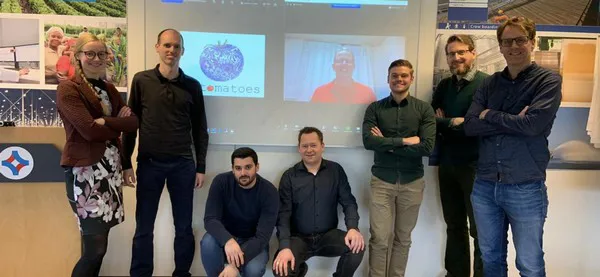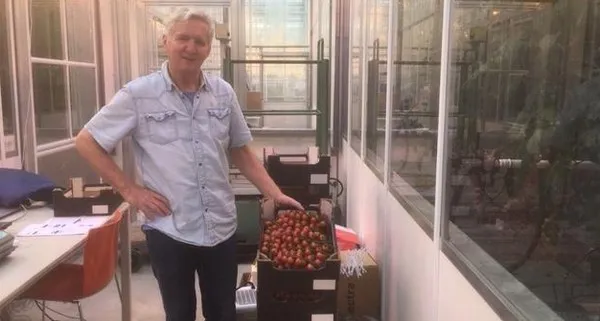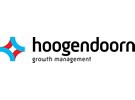All six teams in the Autonomous Greenhouse Challenge have now harvested for the first time. Slowly the photos of beautiful, red cherry tomatoes are ending up on social media, and in the meantime harvest data can now also be linked to it.
Whereas the first four teams were able to harvest for the first time on 14 February, the two remaining teams followed on Thursday 20 February. Among them Team AuTomatoes who called the first harvest 'promising'.

Team AuTomatoes
Focus on the plant
Based on their collective multidisciplinary knowledge team AuTomatoes hypothesized that a higher stem density would be beneficial for crop growth. Therefore, they chose to grow their tomato crop with a higher stem density than is normally used in the Netherlands. So far the plants look vigorous and healthy.
The main focus for team AuTomatoes is based on the plant. Intelligent algorithms are used to drive the greenhouse controls. By means of sensor generated data the plants provide feedback to the team. Based on this feedback, the algorithms are adjusted to create an optimum growth climate. Next to realizing the best possible production with excellent quality, the team also focuses on maximizing the resource use efficiency, i.e. produce more with less.
First harvest figures
Silke Hemming of Wageningen University & Research, the host of the cultivation competition, writes on LinkedIn that the first harvests of the five finalists and the reference growers were between 0.01-0.32 kilos per square meter. Of these, most were class A.

For more information: Hoogendoorn Growth Management
Hoogendoorn Growth Management
info@hoogendoorn.nl
www.hoogendoorn.nl
